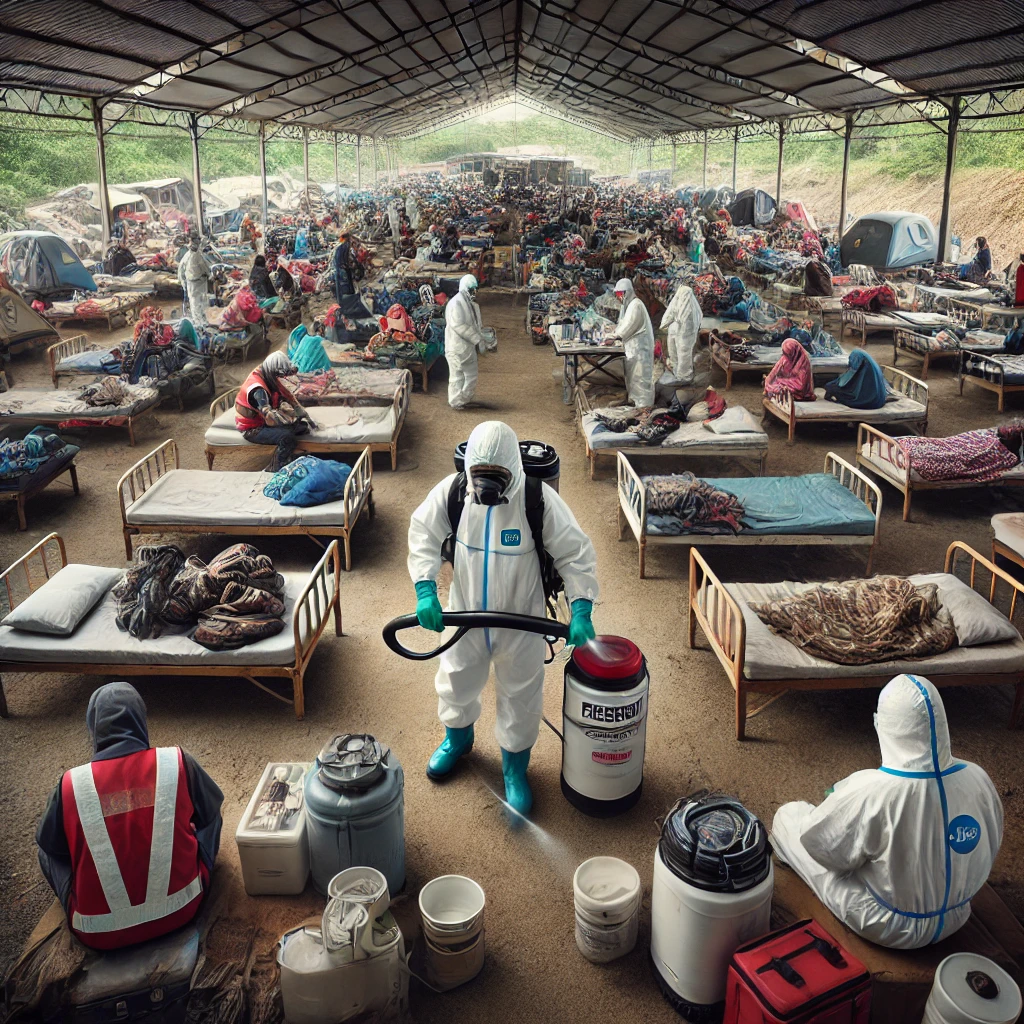
Introduction to Pest Control in Emergency Situations
Pest control in emergency shelters and disaster zones is crucial for maintaining safe and healthy conditions for displaced populations. Natural disasters such as hurricanes, floods, earthquakes, and wildfires often lead to the establishment of temporary shelters where large numbers of people seek refuge. These environments can quickly become breeding grounds for pests due to overcrowding, inadequate sanitation, and the disruption of regular pest management services. Effective pest control in these settings is essential to prevent the spread of diseases and protect the well-being of vulnerable populations.
Challenges of Pest Control in Disaster Zones
Implementing pest control in disaster zones presents several unique challenges. The immediate aftermath of a disaster often leads to a breakdown in infrastructure and public services, making it difficult to access and deliver pest control resources. Overcrowding and limited sanitation facilities in emergency shelters can attract pests such as rodents, flies, mosquitoes, and cockroaches, which can spread diseases like leptospirosis, dengue fever, and cholera. Additionally, the use of chemical pesticides may be restricted due to health concerns for the shelter occupants, many of whom may already be suffering from injuries, weakened immune systems, or respiratory issues. These factors complicate traditional pest control methods, necessitating adaptable and rapid-response strategies.
Strategies for Effective Pest Management in Emergency Shelters
To effectively manage pests in emergency shelters, a combination of preventive measures, monitoring, and non-chemical controls is essential. Preventive strategies should include the proper disposal of waste, securing food supplies in pest-proof containers, and ensuring that shelters are kept clean and dry. Regular monitoring for signs of pest activity is crucial for early detection and intervention. Non-chemical pest control methods, such as traps, fly screens, and mosquito nets, can help reduce pest populations without posing health risks to shelter occupants. In some cases, biological controls, such as the release of natural predators or the use of biopesticides, may also be appropriate, depending on the specific pests and local conditions.
Coordination and Training for Pest Control in Disaster Response
Effective pest control in disaster zones requires coordination among various agencies and organizations involved in emergency response. This includes local governments, non-governmental organizations (NGOs), and international relief agencies. Training for staff and volunteers on basic pest management principles and safe pest control practices is essential to ensure that pest issues are addressed promptly and effectively. Moreover, establishing clear communication channels for reporting pest problems and accessing pest control resources can help streamline response efforts and minimize the risk of pest-borne diseases in shelters.
Long-Term Considerations for Pest Management in Disaster-Prone Areas
While immediate pest control is critical during the initial response phase, long-term strategies are also necessary to prevent future pest problems in disaster-prone areas. This includes improving infrastructure to withstand natural disasters better and incorporating pest-resistant designs into emergency shelters. Additionally, community education and outreach programs can help residents understand the importance of pest prevention and control, even in times of crisis. By fostering a culture of preparedness and resilience, communities can reduce the impact of pests during disasters and contribute to a safer and healthier environment for all.
